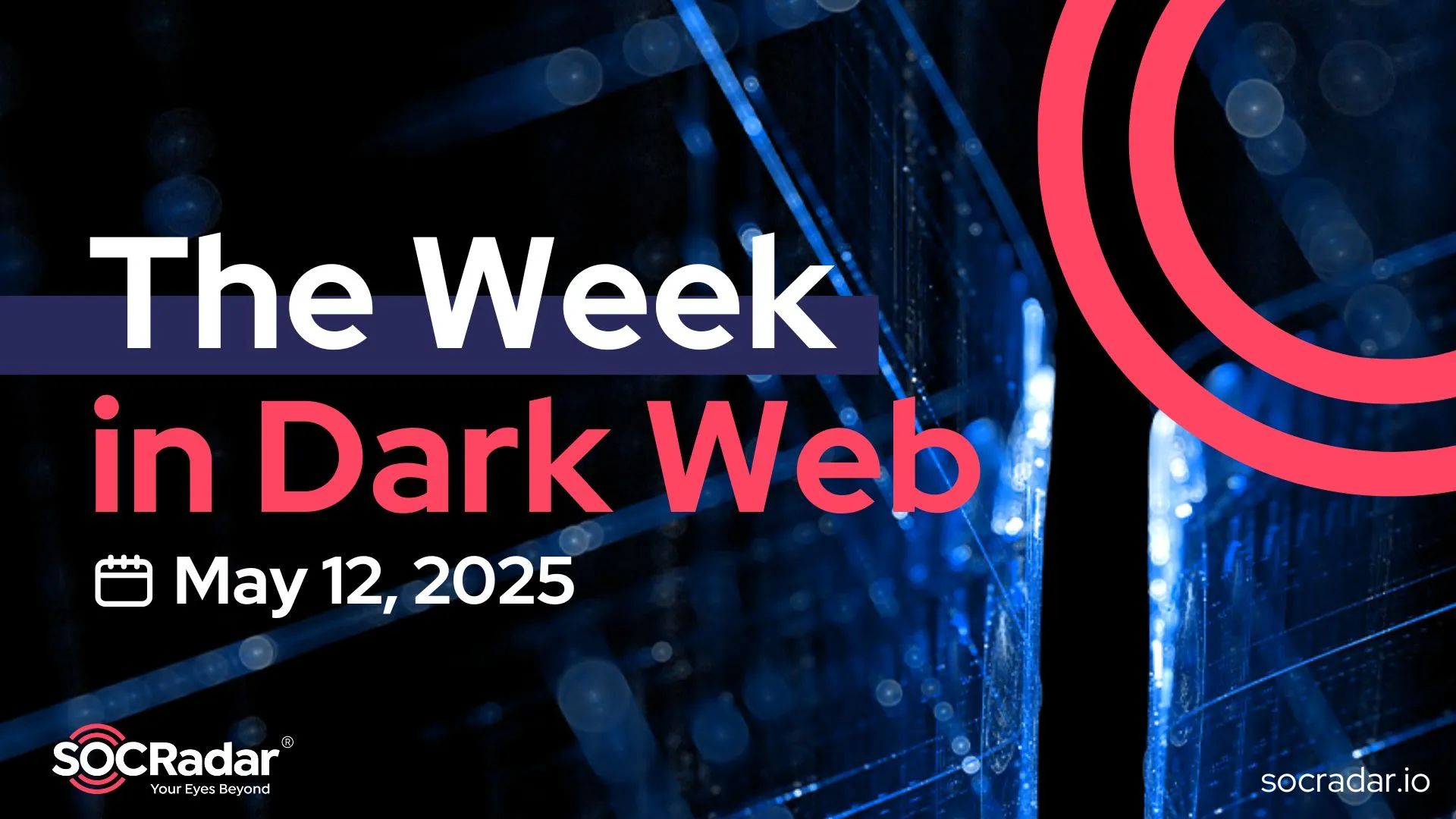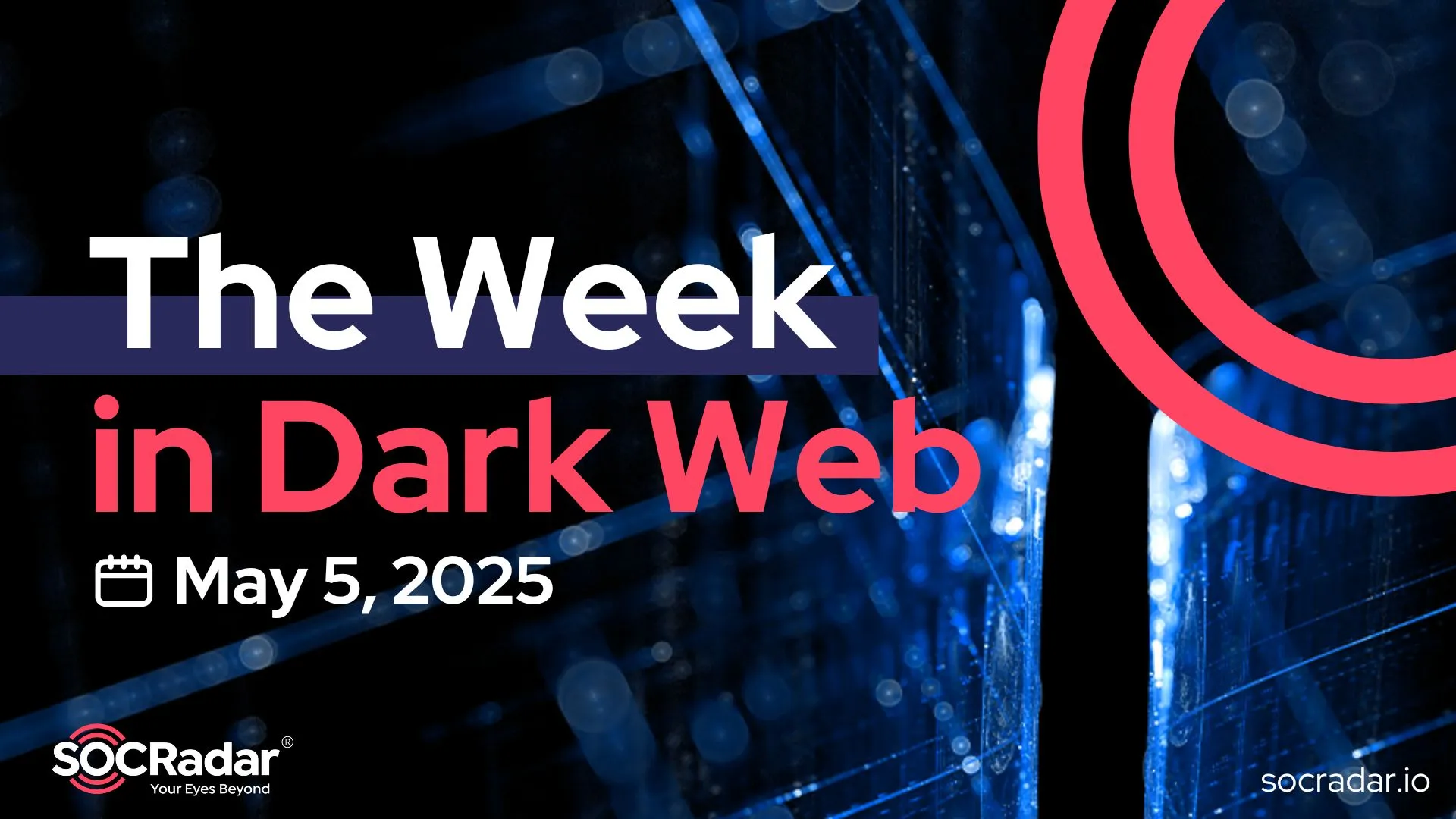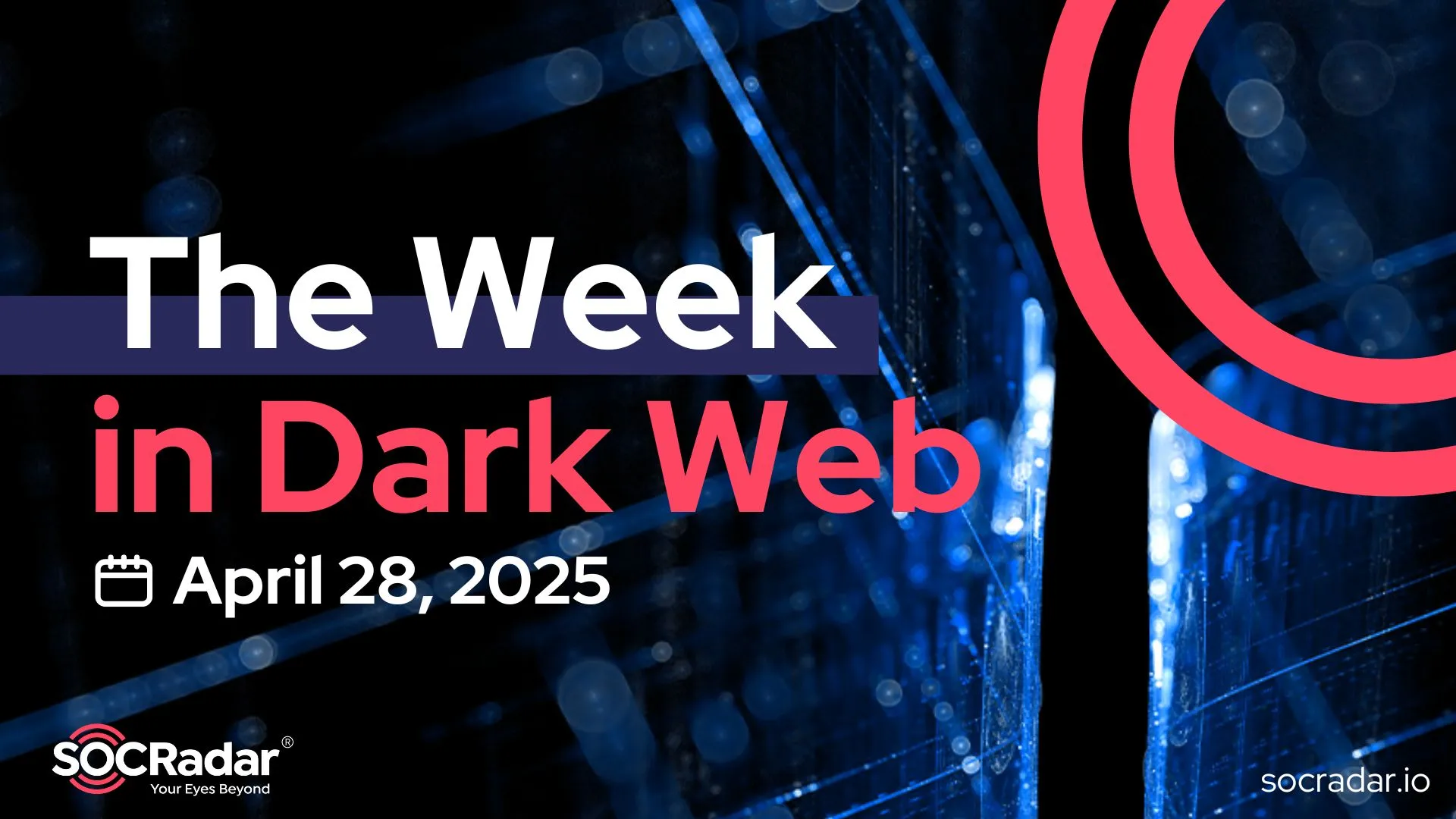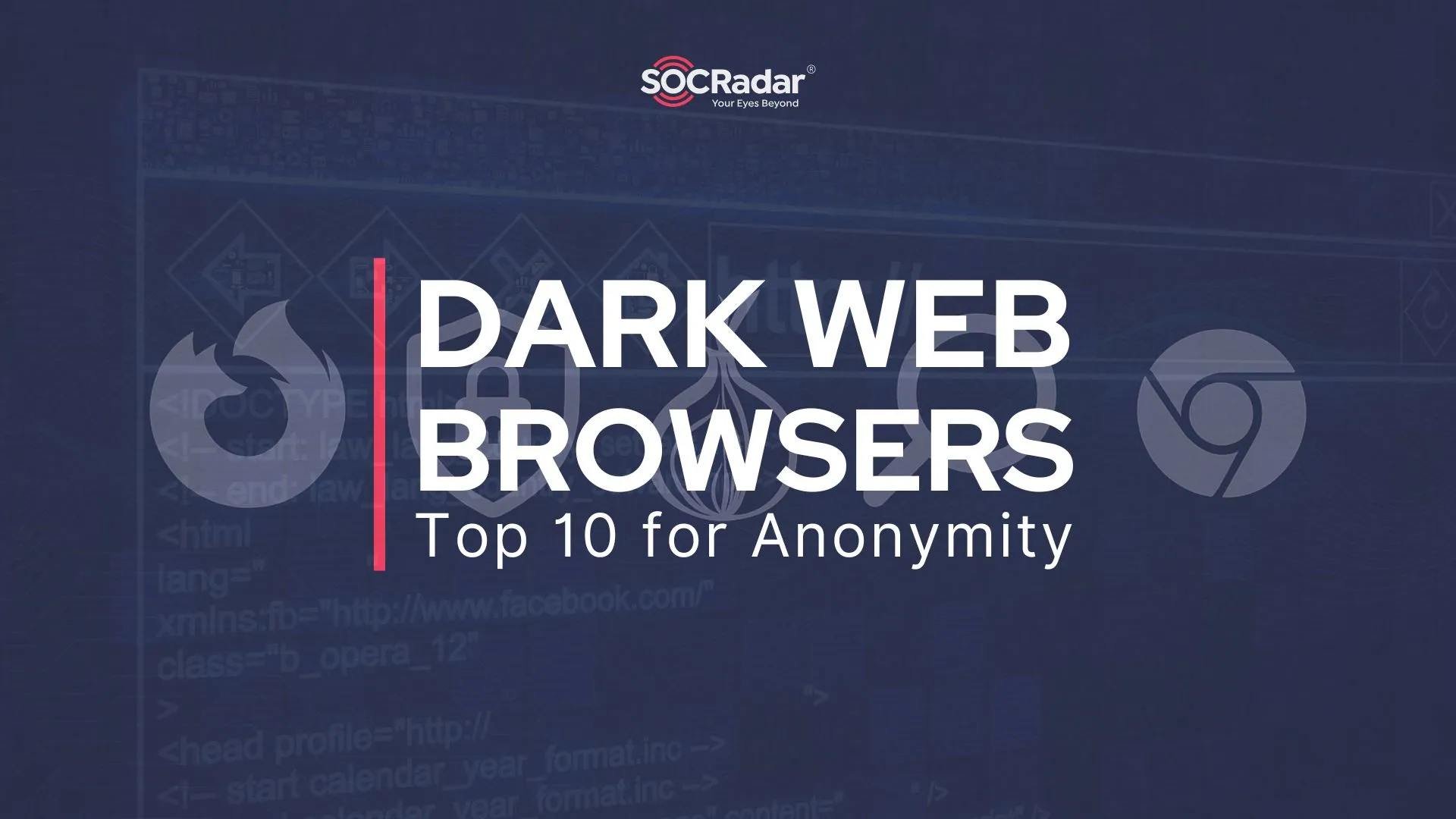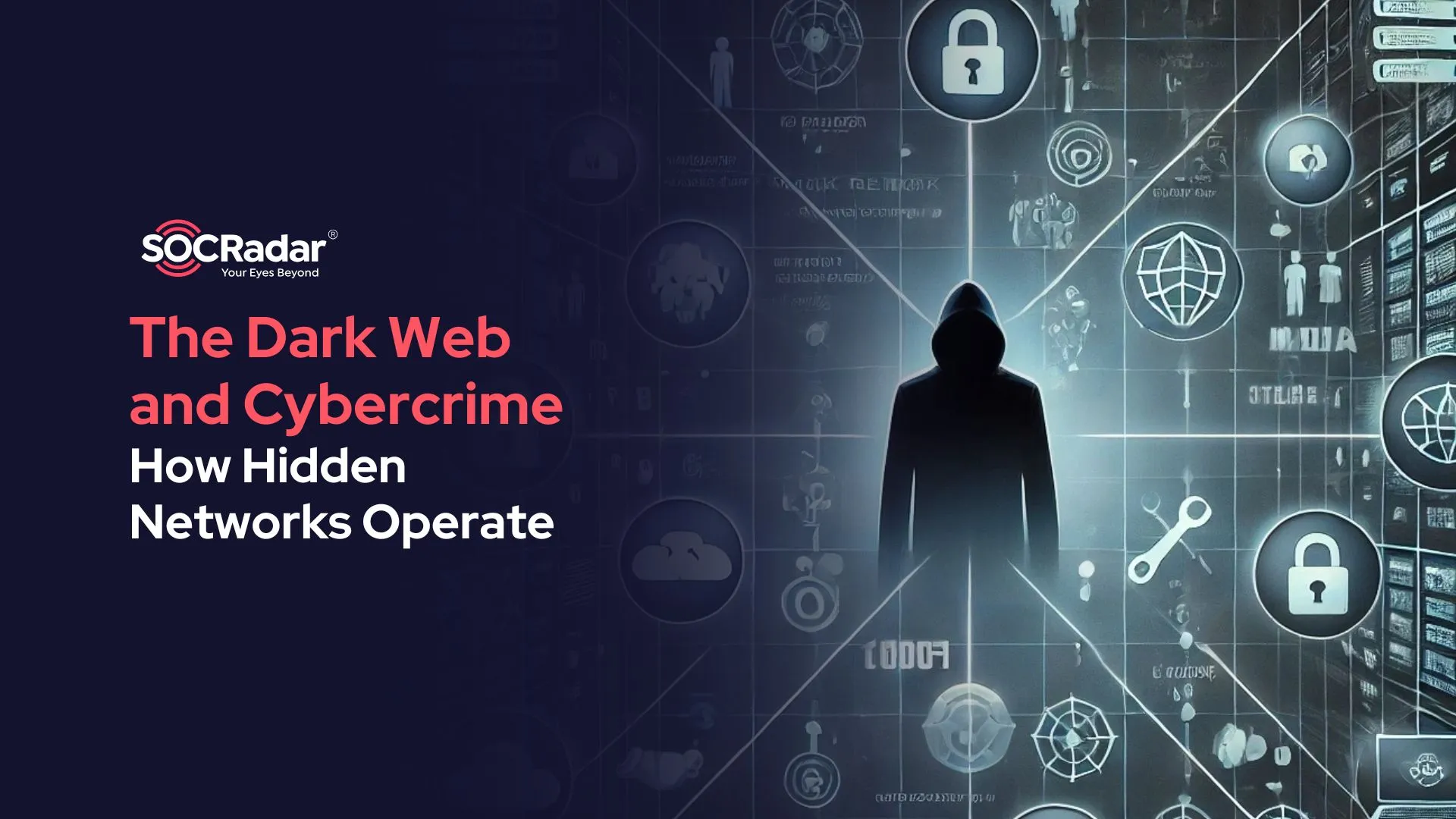
The Dark Web and Cybercrime: How Hidden Networks Operate
The Dark Web represents the concealed segment of networks where anonymity reigns supreme. While not inherently illegal, its infrastructure has become a hub for cybercrime, offering a cloak for malicious actors to operate undetected.
Understanding the Dark Web is critical for modern organizations to effectively protect themselves against its threats; the Dark Web facilitates criminal activities by acting as a marketplace for stolen credentials, stealer logs, and other illicit goods. This makes it an important area of focus for cybersecurity efforts.
SOCRadar’s Cyber Threat Intelligence and Dark Web Monitoring modules offer organizations real-time insights into underground activities, enabling proactive defense against potential breaches.
This blog explores the Dark Web’s structure, common cybercrimes, and the challenges faced by law enforcement and cybersecurity teams in addressing its threats.
Structure of Dark Web Networks
The Dark Web operates as a subset of the deep web, the part of the internet not indexed by standard search engines. To access the Dark Web, specialized software like Tor (The Onion Router) or I2P (Invisible Internet Project) is required. These tools anonymize users by encrypting their data and routing it through multiple relay nodes, masking their identities and locations.

Top 3 Anonymous Communication Networks Used for Dark Web
Characteristics of the Dark Web
- Encryption: All communications are encrypted to protect user privacy.
- Access Restrictions: Hidden websites, often using the ‘.onion’ domain, are inaccessible via conventional browsers.
- Decentralization: The lack of a central authority allows Dark Web operators to avoid traditional oversight and regulation.
While these features protect privacy and enable free communication in oppressive environments, they also shield illegal activities from scrutiny.
Common Cybercrimes on the Dark Web
The anonymity of the Dark Web enables a wide range of illegal activities. From financial fraud to organized cyberattacks, these crimes often mirror the sophistication of legitimate operations. Here are the most common threats:
Data Breaches and Stolen Information
Leaked sensitive information is a common commodity on the Dark Web. Threat actors trade:
- Personal Data: Names, addresses, and identification numbers.
- Corporate Information: Confidential documents, intellectual property, and trade secrets.
- Login Credentials: Email and system passwords, often sold in bulk.
Ransomware-as-a-Service (RaaS)
The Dark Web simplifies cybercrime by providing ransomware kits to attackers with limited technical skills. These kits include user guides, payment systems, and technical support, operating much like a legitimate software service.
Illicit Trade and Services
Marketplaces on the Dark Web function like e-commerce platforms but deal in illegal goods, including drugs, counterfeit documents, firearms, and malware and hacking tools.
Financial Fraud
Cybercriminals exploit the Dark Web for:
- Selling stolen credit card details.
- Laundering money via cryptocurrency mixers.
- Distributing counterfeit currencies and financial instruments.
Cyber Espionage
Dark web forums and platforms host state-sponsored hackers and freelance operatives selling stolen military or corporate intelligence.
SOCRadar’s Cyber Threat Intelligence module identifies Indicators of Compromise (IOCs) from the Dark Web with IOC Radar, helping organizations detect stolen data or ongoing malicious campaigns before they cause significant damage.

IoC Radar on the SOCRadar platform
How Criminals Utilize Hidden Networks
The Dark Web not only provides anonymity but also serves as an infrastructure for organized cybercrime. Here’s how criminals leverage its unique features:
Anonymous Marketplaces
These hidden marketplaces mimic legitimate e-commerce platforms, offering illegal goods and services. Payments are often made in cryptocurrencies like Bitcoin or Monero to further obscure traces.
Hacking and Malware Development
Dark web forums allow cybercriminals to sell pre-made hacking tools, phishing kits, and ransomware. Buyers gain access to advanced tools without needing technical expertise.
Collaboration and Recruitment
Encrypted chatrooms and forums enable criminals to:
- Share techniques and resources.
- Recruit skilled hackers.
- Advertise new malware or exploits
Cryptocurrency Transactions
Cryptocurrencies enable secure, anonymous transactions, which are critical for the sale of illegal goods and services.
Through Digital Risk Protection, SOCRadar monitors Dark Web mentions of brands, executives, and digital assets. This real-time intelligence enables companies to prevent or mitigate threats before they escalate.

SOCRadar’s DRP module monitors your assets against digital risks and protects your brand.
Challenges in Combating Dark Web-Based Cybercrime
Addressing Dark Web-related crimes is a complex and evolving challenge for cybersecurity teams and law enforcement. Below are the primary obstacles:
Anonymity and Encryption
The Dark Web’s architecture is designed to obscure user identities, making it difficult to trace criminals or dismantle operations.
Global Jurisdiction
Dark web crimes are rarely confined to one country. For example, an illegal marketplace might operate in one region, serve customers worldwide, and host servers in another jurisdiction. This complicates legal actions and enforcement.
Rapid Evolution of Platforms
As authorities shut down illegal marketplaces, new ones emerge with improved security measures, making it a constant game of cat and mouse.
Technical Expertise
Infiltrating Dark Web networks requires advanced tools and skills, which many organizations lack. Cybercriminals also continue to innovate, leveraging technologies like AI to evade detection.
SOCRadar’s Attack Surface Management module provides organizations with a clear understanding of their vulnerabilities. By identifying exposed digital assets or misconfigured systems, companies can secure weak points that might attract dark web activity.

SOCRadar’s Attack Surface Management module, Company Vulnerabilities
The Role of Technology and Law Enforcement
Despite these challenges, there have been significant successes in tackling Dark Web-enabled cybercrime. Global operations have taken down major marketplaces like Silk Road and AlphaBay, while advanced technologies such as blockchain analysis have enabled the tracing of cryptocurrency transactions.
Conclusion
The Dark Web is a double-edged sword—offering privacy to those in need while simultaneously empowering cybercriminals. As cyber threats evolve, understanding how these hidden networks operate is essential for businesses, governments, and individuals.
With tools like SOCRadar’s Cyber Threat Intelligence, Dark Web Monitoring, and Attack Surface Management modules, organizations can gain real-time insights into Dark Web activity, enabling them to take proactive measures against emerging risks. By staying informed and vigilant, we can mitigate the dangers posed by the hidden networks of the Dark Web.
The fight against Dark Web-enabled cybercrime is ongoing, but with the right technology and strategies, businesses can strengthen their defenses and secure their digital presence.






























